We are not fans of evening flights but of course, when travelling you do not always have the choice. Our China Eastern Airlines flight to Shanghai was not leaving until 9.05 pm, leaving us with virtually a whole day to enjoy a bit more of Rome city. And so for our last day, we booked ourselves, again through our hotel, on a morning tour of the "When in Rome Must See" Vatican and St Peter's Basilica.
After years of visiting Muslim countries and even having a sort of Christian upbringing, for me it had been an odd and somewhat challenging experience to witness the devout Christian society of Italy and the visiting tourists to Rome. I questioned myself several times about visiting the Vatican. Alan was at least raised as a Catholic and as a child attended a Catholic boarding school - and he certainly understood a lot more about Christianity than me. Today, neither of us are particularly religious but we agreed that we wanted to experience the odd enclave of the Vatican and especially to witness in person the much famed and much learnt about masterpiece artworks and treasures of the Vatican Museums, the Sistine Chapel and St Peter's Basilica.
Our tour was well organised and a mini-van picked us up on time from our hotel. Once again, we merged with several other mini-buses to form a tour group of some 50 people. Our guide was a charming, dynamic woman who was even more "Italian" than our guide for our tour of the Palatine and Colosseum some days before. I was totally fascinated with her lovely Italian accent and the way her rolled "r's" seemed to last for minutes. She was also a gifted and highly knowledgeable guide, and had a great sense of fun.
How our guide kept our mottly team together defied belief. We were a really odd lot, varying in age and physical capability, as well as personality and nationality about as much as it would seem humanely possible. The usual variation of tour demographics as we understand..... A bland Canadian couple probably in their late 60's moaned constantly from the start of our tour. A group of five Italian-Australians with a number of small grandchildren laughed and happily chatted to us about how much they were enjoying their trip and being back in their homeland. The Canadians dipped into deep despair when the husband left his grey cardigan on the mini bus - before the tour even began and we all had to wait until the driver could be called back to the Vatican. All part of the fun of being on a guided tour.
We could not afford to be critical of being on a tour however. The streets around the Vatican were so packed with queues of People Not wanting To Be On A Tour that it was impossible to think how they would ever reach the ticketing gates of the Vatican. There was no way about it, you HAD to be on a pre-paid tour just to gain entry before nightfall.
Eventually, we began our walk to the Vatican entry but unfortunately the radio transmission from our guide's microphone to our ear piece radio sets was not working and so for most of the tour, we were unable to hear her information and explanations. The burgeoning crowds did not help either. At times, it was almost impossible to see our guide, let along have time to contemplate and appreciate the marvellous artworks we were witnessing. It was no-one's fault but it did almost ruin our tour.
THE VATICAN
The walled enclave of the Vatican is the smallest (both in area of 44 hectares and in population of just some 840 people) internationally recognised independent state in the world. The ecclesiastical state is ruled by the Bishop of Rome - the Pope. The operations of the Vatican City are fascinating, if somewhat bizarre.
I was interested to learn that Vatican City is distinct from the Holy See (I must confess however, that I really had no idea of what the Holy See actually was - just something unexplained I had heard about during the few years as a child that I attended Sunday School). Apparently the Holy See dates back to early Christianity and is the main seat of some 1.2 million Latin and eastern Catholic followers around the world. The independent state of Vatican City on the other hand, only came into existence in 1929 through the Lateran Treaty (signed by Prime Minister and Head of State Mussolini and Pope Pius XI) between the Holy See and Italy. The treaty also reinforced the special status of Catholicism throughout Italy. According to the terms of the treaty the Holy See has "full ownership, exclusive dominion, sovereign authority and jurisdiction" over the city state.
Today, the governance of Vatican City is through an absolute elective monarchy, with the Pope exercising principal legislative, executive and judicial power - a rare example of a non-hereditary monarchy. The Pope as the sovereign of state and absolute monarch, appoints a body of cardinals for five-year periods.
As the Vatican City is an enclave within Italy, its military defence is provided by the Italian armed forces. Vatican City has no armed forces of its own but the Swiss Guard, a military corps of the Holy See and resident of the state, is responsible for the personal security of the Pope. The history of the Swiss Guard is described by Wikipedia:
"Soldiers of the Swiss Guard are entitled to hold Vatican City State passports and nationality. Swiss mercenaries were historically recruited by Popes as part of an army for the Papal States..... Recruitment is arranged by a special agreement between the Holy See and Switzerland. All recruits must be Catholic, unmarried males with Swiss citizenship who have completed their basic training with the Swiss Army with certificates of good conduct, between the ages of 19 and 30, and be at least 174 cm (5 ft 9 in) in height. Members are equipped with small arms and the traditional halberd (also called the Swiss voulge), and trained in body guarding tactics..."
The ornately clad Swiss Guard in their traditional colourfully striped and stockinged uniforms can be seen all around Vatican City. One would guess it may be an unusual career move.
The Vatican City State Budget includes the Vatican Museums and post office. It is financially supported by the sale of stamps and coins and mementos; fees for admission to the museums and sales of publications. The Vatican has it own Vatican Bank and issues its own coins. In 2014 a Secretariat for the Economy was established which is responsible for all the economical, financial and administrative activities of the Holy See and the Vatican City State. It is headed by none other than the controversial Australian Cardinal George Pell.
Citizenship of the Vatican is granted on the grounds of appointment to work in the service of the Holy See. It usually terminates on cessation of appointment. Citizenship is also extended to the spouse, parents and dependents of a citizen, provided that they are living with the person who is a citizen. The Holy See, not being a country, only issues diplomatic and service passports, whereas the Vatican City State issues normal passports for its citizens. Amazing!
THE VATICAN MUSEUMS AND THE SISTINE CHAPEL
The Vatican museums are located within the boundaries of the Vatican City and display works from the massive collections built up by successive Popes over the centuries, including some of the most renowned classical sculptures and most important masterpieces of Renaissance art in the world.
The Vatican is home to a staggering seven kilometers of exhibitions and fantastic collections. Lonely Planet Guide states "If you spent one minute on every exhibit, it would take you twelve years to see everything...". That does sound somewhat far fetched but the amount and quality of exhibits that we managed to squeeze in during our relatively short morning tour, was absolutely overwhelming.
We found it really staggering to see the artworks we had learnt about for years. Raphael's Madonna di Foligno and La Trasfigurazione, Leonardo da Vinci's San Gerolamo, Giovanni Bellini's Pieta, Titian's Portrait of Doge Marcello, Raphael's The Cardinal and the Theological Virtues - to name just a few.
But it was the Sistine Chapel that everyone really wanted to see, including us. Sadly, the chapel was so packed with tourists that we were not even able to get close enough to the wonderful paintings to really take in the fantastic artwork. We could barely take one step at a time as our backs and faces were jam packed against the other tourists. I would have hated to think what would have happened if there was a fire or if someone was seriously ill.
The Sistine Chapel is housed in the Apostolic Palace, the official residence of the Pope. The chapel is of both religious and cultural importance. It is the Pope's private chapel and is of course home to the famous works of Botticelli, Perugino, Rosselli and of course Michelangelo's unrivalled masterpiece enormous ceiling frescoes and spectacular painting The Judgment.
Photography is not allowed in the Sistine Chapel. A great shame but I consoled myself that most of my photos taken of the interior of churches and chapels do no justice at all to magnificent artworks. Below are some of the fantastic works taken in the other Vatican Museums.
ST PETER'S BASILICA
St Peter's Basilica is Rome's most famous and outstanding religious icon. It is widely regarded as the largest, richest and most spectacular of all the churches. A monument to centuries of artistic genius, the Basilica contains three of Italy's most celebrated masterpieces: Michelangelo's Pieta, the staggering structure of his Basilica Dome and Bernini's Canopy (Baldachin) over the Main Altar. It is also regarded as one of the holiest of Catholic shrines in the world and "The greatest of all churches of Christiandom".
St Peter's is famous as a place for pilgrimage. Being located within the Vatican, the Pope presides at a number of liturgies each year, amassing audiences of over 80,000 people.
We entered the Basilica through the broad square of the Piazza San Pietro (St Peter's Square). It is not actually a square but a massive oval plaza with trapezoid ends, and was designed by Bernini in the 1630's to be representative of a human embrace.
Theft has been around for a very long time, legitimised even in the most religious of sanctuaries. At the centre of the St Peter's Square is the commanding 25.5 meter Egyptian red granite obelisk which was erected at the Vatican in 1586. The obelisk was originally erected at Heliopolis in Egypt by an unknown pharaoh of the Fifth Dynasty of Egypt and dates back to c. 2494 - 2345 BC. During its lifetime of some 4,400 years, the obelisk has been successfully relocated on three occasions. It apparently stands on the site where St Peter, one of Jesus Christ's Apostles, was martyred in AD 64. Tradition and some historical evidence holds that St Peter's tomb is directly beneath the Altar of the Basilica.
The facade of the massive Basilica is almost forbidding, spanning some 48 meters in height and 119 meters in width. It is supported by eight 27 meter columns which support an upper attic, upon which are mounted 13 statues representing Christ the Redeemer, St John the Baptist and the 11 Apostles. Behind the facade, and more readily observed from a distance, lies the huge Dome of the Basilica.
Like the Vatican Museums, St Peter's was heavily crowded with tourists and tour groups but fortunately it was also as spectacular as we had imagined. Everything it seemed was made from marble, bronze and gold. The frescoes, paintings, mosaics and sculptures were nothing less than breathtaking. It is certainly no wonder that the Basilica (built from 1506 to 1626) took a mind boggling 120 years to complete.
The Basilica also houses the tombs of many former Popes. It was rather astonishing to be able to witness the clear glass encased tomb of the preserved body of Pope John XXIII who died at the age of 82 years old of stomach cancer in June 1963.
Michelangelo's The Pieta
The Basilica's most famous piece of art is undoubtedly Michelangelo's magnificent marble sculpture The Pieta. Now housed in bullet proof glass, the sculpture was made from just one piece of beautiful Carrara marble. The work is so fine and the carving so exquisite that it is almost impossible to describe. It really must be seen to be believed. Renaissance.org describes the history of The Pieta:
"....In 1497, Cardinal Jean de Billheres commissioned Michelangelo to create a work of sculpture to go into a side chapel at Old St. Peter’s Basilica in Rome. The resulting work – The Pieta – would be so successful that it helped launch Michelangelo’s career unlike any previous work he had done.
Michelangelo claimed that the block of Carrara marble he used to work on this was the most “perfect” block he ever used, and he would go on to polish and refine this work more than any other statue he created.The scene of The Pieta shows the Virgin Mary holding the dead body of Christ after his crucifixion, death, and removal from the cross, but before he was placed in the tomb. This is one of the key events from the life of the Virgin, known as the Seven Sorrows of Mary, which were the subject of Catholic devotional prayers...."
In more modern times, The Pieta has experienced some disturbing events. In 1972, a Hungarian-born man (later found to be mentally disturbed) rushed at the statue with a hammer breaking and dislodging the left arm of the Virgin, and damaging and breaking her nose and some of her left eye.
The Pieta is no longer allowed to leave the Vatican and is permanently housed in a bullet proofed glass container.
Witnessing The Pieta was a perfect ending to our tour. We were quickly shunted off to the Vatican Souvenir shops where no doubt we would have had to stay for some time before our mini bus would return us back to our hotel. Like many of our group, we opted for a taxi.
We had to admit that we were slightly disappointed with our visit to the Vatican. We are sure that this is because of the jam packed crowds which made it almost impossible to absorb any of the atmosphere, or in some instances even to be able to view, the fantastic artworks. Fortunately, our opportunity to witness "in the flesh" Michelangelo's The Pieta made our tour to St Peter's Basilica absolutely memorable.
Although our hotel granted us a very generous late check out, we still had a lot of time on our hands before our 9.05 pm flight to Shanghai. It was too late for more sight seeing and in fact not only were we tiring of touring, but we had seen most of the more significant sites in Rome. It is always our contention that we only need three days at the most to explore a city and interestingly Rome was no exception.
After our check out, our hotel offered for us to make ourselves at home on their top floor which had nice lounges and lovely views of the surrounding district. The owner of the hotel on finding us resting there immediately insisted that she cook us some pasta. A lovely gesture and so typical of the excellent and friendly service of this little hotel.
We would strongly recommend the Relais 6 as a fine and very professionally managed boutique hotel. It certainly enhanced our most enjoyable stay in the lovely city of Rome.
Vatican City: The Smallest State in the World
Thursday, May 29, 2014
 Rome, Latium, Italy
Rome, Latium, Italy
Other Entries
-
22"If You Love Ladakh, You Will Just ADORE Morocco!"
May 1415 days prior Casablanca, Moroccophoto_camera18videocam 0comment 0
Casablanca, Moroccophoto_camera18videocam 0comment 0 -
23Morocco Profile: Ancient Berbers - The Arab Spring
May 1514 days prior Fes, Moroccophoto_camera4videocam 0comment 0
Fes, Moroccophoto_camera4videocam 0comment 0 -
24Meknes & Volubilis: The Beautiful People Go to Fes
May 1514 days prior Fes, Moroccophoto_camera25videocam 0comment 0
Fes, Moroccophoto_camera25videocam 0comment 0 -
25Fes: At Last Macke's Medina and the Elusive Donkey
May 1613 days prior Fes, Moroccophoto_camera29videocam 0comment 0
Fes, Moroccophoto_camera29videocam 0comment 0 -
26Across the Atlas: Auguste Macke's Mann mit Esel"!!
May 1712 days prior Midelt, Moroccophoto_camera25videocam 0comment 0
Midelt, Moroccophoto_camera25videocam 0comment 0 -
27Tribulations of the Trilobites
May 1811 days prior Midelt, Moroccophoto_camera12videocam 0comment 0
Midelt, Moroccophoto_camera12videocam 0comment 0 -
28Over the High Atlas: The Camel Man and The Storm
May 1811 days prior Tinghir, Moroccophoto_camera45videocam 0comment 0
Tinghir, Moroccophoto_camera45videocam 0comment 0 -
29A Smashing Start: How Often Does the Sahara Flood?
May 1910 days prior Merzouga, Moroccophoto_camera33videocam 0comment 0
Merzouga, Moroccophoto_camera33videocam 0comment 0 -
30Happy in the Sahara: Desert Foxes & Fossils
May 209 days prior Merzouga, Moroccophoto_camera28videocam 0comment 0
Merzouga, Moroccophoto_camera28videocam 0comment 0 -
31Ouzina - A Desert Town With No Streets
May 218 days prior Ouzina, Moroccophoto_camera23videocam 0comment 1
Ouzina, Moroccophoto_camera23videocam 0comment 1 -
32To Zagora: Deserts, Floods and Hostile Borders
May 227 days prior Zagora, Moroccophoto_camera22videocam 0comment 0
Zagora, Moroccophoto_camera22videocam 0comment 0 -
33A Day Around Zagora OR Just Hamadu and Me
May 236 days prior Ouarzazate, Moroccophoto_camera19videocam 0comment 0
Ouarzazate, Moroccophoto_camera19videocam 0comment 0 -
34Ouarzazate: Lawrence of Arabia and More......
May 245 days prior Tizi-n-Tichka, Moroccophoto_camera26videocam 0comment 0
Tizi-n-Tichka, Moroccophoto_camera26videocam 0comment 0 -
35Where the Sun Sets OR a Brush with a Cobra!
May 254 days prior Marrakech, Moroccophoto_camera12videocam 0comment 0
Marrakech, Moroccophoto_camera12videocam 0comment 0 -
36Finding FedEx Freight For Our Fragile Fossils
May 263 days prior Rome, Italyphoto_camera6videocam 0comment 0
Rome, Italyphoto_camera6videocam 0comment 0 -
37Palatine: Foundations of the Eternal City of Rome
May 272 days prior Rome, Italyphoto_camera24videocam 0comment 0
Rome, Italyphoto_camera24videocam 0comment 0 -
38Perfect Day in Rome: Tartufo, Piazzas & Basilicas
May 281 day prior Rome, Italyphoto_camera25videocam 0comment 0
Rome, Italyphoto_camera25videocam 0comment 0 -
39Vatican City: The Smallest State in the World
May 29 Rome, Italyphoto_camera25videocam 0comment 0
Rome, Italyphoto_camera25videocam 0comment 0 -
40Heading Home - Shanghai & The Toabao Markets
May 301 day later Shanghai, Chinaphoto_camera10videocam 0comment 0
Shanghai, Chinaphoto_camera10videocam 0comment 0 -
41Homeward Bound to Australia & Epilogue
Jun 024 days later Crowdy Head, Australiaphoto_camera2videocam 0comment 0
Crowdy Head, Australiaphoto_camera2videocam 0comment 0

 Rome, Latium, Italy
Rome, Latium, Italy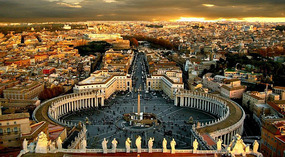
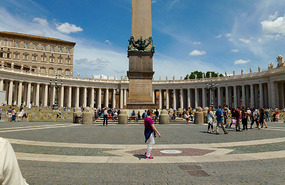
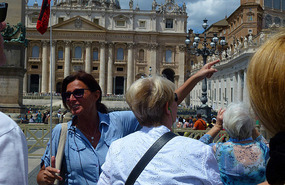
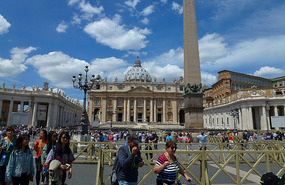
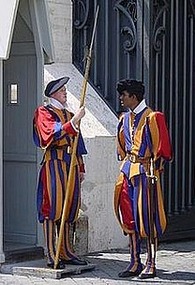
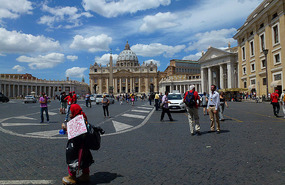
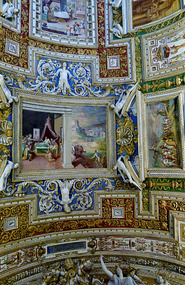
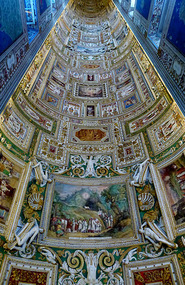
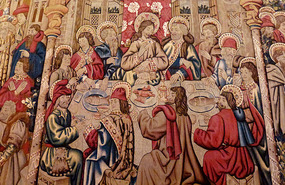
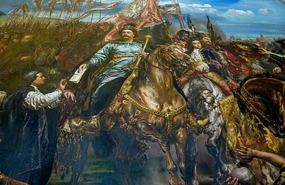
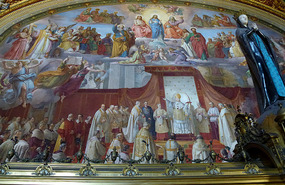
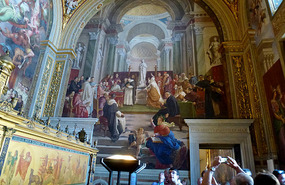
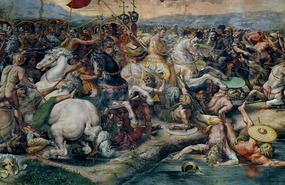
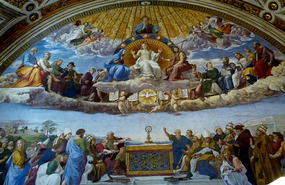
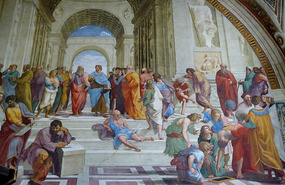
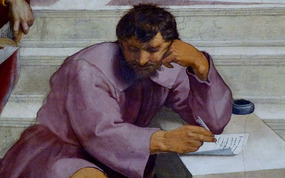
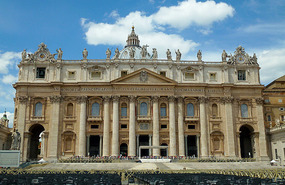
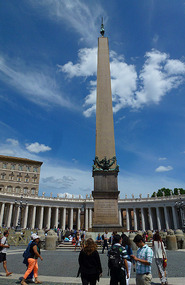
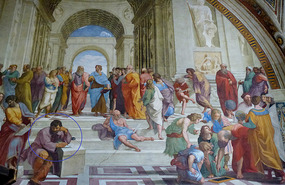
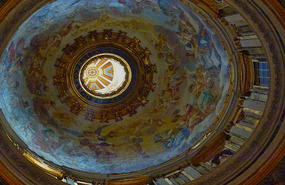
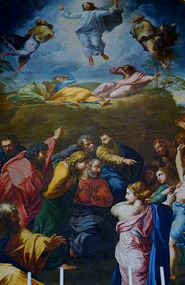
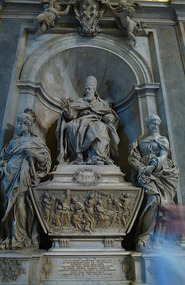
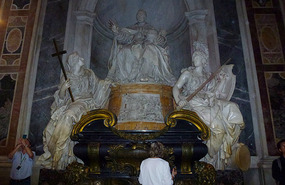
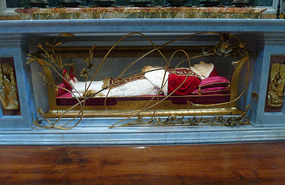
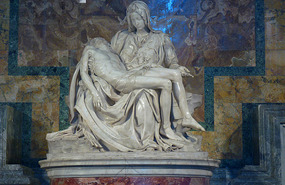




2025-05-22